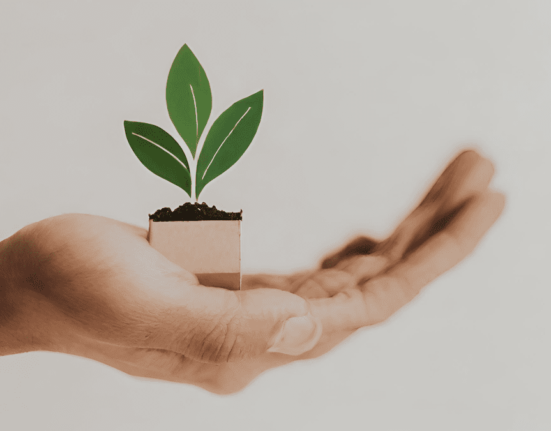
As we enter 2025, market conditions are presenting both challenges and opportunities for collectors. The post-pandemic enthusiasm that propelled record-breaking auction results has cooled, and prices—particularly in the contemporary sector—have softened. Sellers are holding back and supply is constrained. Meanwhile, interest rates are expected to decline further, with three-month term secured overnight financing rate (SOFR) projected to fall below 4 percent by the end of the year. Against this backdrop, art-secured finance is becoming an indispensable tool for collectors and investors seeking to navigate the evolving financial landscape. Those who act decisively will find that strategic liquidity planning can unlock new acquisitions, provide flexibility amid economic shifts and ensure that assets are leveraged for maximum financial advantage.
The art market has undergone a dramatic transformation over the past two decades, and I have seen it shift from a passion-driven pursuit to a powerful financial asset class that attracts sophisticated investors and savvy collectors alike. At The Fine Art Group, we started issuing art-secured loans in 2017, and since then, we have seen the demand for them grow and grow each year. What was once considered an illiquid, static investment is now a dynamic and strategic financial tool, with art-backed lending, purchase financing and portfolio management becoming important to wealth planning. With the global art market valued at over $65 billion and ultra-high-net-worth individuals collectively holding more than $2 trillion in art and collectibles, the demand for liquidity solutions has never been greater.
Purchase financing and opportunistic collecting
Over the past 18 months, art prices have stagnated or declined, impacted by economic uncertainty and shifting geopolitical tides. The enthusiasm for art sales we saw post-pandemic has given way to a more cautious approach. However, in moments of market contraction, opportunities arise. Works that commanded $1 million a year ago can now be acquired at a significant discount, making this an ideal time for strategic collecting.
Liquidity is key in this environment, and purchase financing allows collectors to move quickly when sought-after works become available. Specialty lenders provide up to 50 percent of the purchase price, enabling buyers to secure artworks while preserving cash flow. Likewise, leveraging existing collections through secured lending empowers collectors to expand their holdings despite market constraints.
We saw great success with a client who reached out to us in 2019 to help him buy a Joan Mitchell painting. The price was good, but the window was only open to him for a short time, and he needed to access liquidity quickly to make the purchase. Having seen how the market for female abstract expressionists has boomed over the past few years, this has put him in a good position for an advantageous sale this year.
Choosing the right time to sell
For those considering a sale, 2025 presents a nuanced but potentially lucrative landscape. While current prices are subdued, forecasts indicate a rebound towards the end of the year. Instead of selling under pressure in a down market, collectors can use art finance solutions to maintain liquidity while waiting for more favorable conditions. Advances against future sales provide immediate capital, allowing sellers to hold onto valuable artworks until demand—and pricing—strengthens.
History has shown that collectors who leverage short-term financing instead of liquidating prematurely tend to achieve stronger returns once the market recovers. Art-secured financing ensures sellers can adopt a strategic, rather than reactionary, approach—maximizing their collections’ value over time.
Quick access to operating and investment capital
Beyond individual collectors, art finance is increasingly playing a crucial role in broader financial strategies. Rising costs—such as escalating labor expenses, material shortages and higher operating costs for galleries—are putting pressure on businesses. For example, we have had collectors come to us who need to inject capital into their businesses during difficult market conditions by leveraging their collections. At the same time, galleries are consolidating geographical outposts to optimize revenue, making liquidity an even greater priority for them. Some of the most rewarding work we have done in the art finance space has involved helping smaller institutions release liquidity as part of their broader fundraising strategies.
In this climate, leveraging private or corporate art collections can provide a fast and effective means of accessing capital for expansion, acquisitions or cash flow stability. Unlike traditional credit channels, which often involve lengthy approval processes, art-secured loans offer a rapid path to liquidity—making them particularly effective as a bridge whilst awaiting permanent funding structures. We regularly find ourselves turning around loans in under a month to meet demand.
Reducing pressure when deadlines arise
Another rising trend in art finance is its use in navigating tax obligations, estate planning and legal settlements. High-net-worth individuals, wealth managers and family offices are increasingly collateralizing their art collections to cover large, often unexpected, expenses. For instance, inheritance tax liabilities can force heirs into rushed sales, often at suboptimal prices, to meet deadlines. Similarly, divorce settlements and unexpected tax bills can create liquidity crunches that require swift resolution. Art-secured finance provides financial flexibility, allowing collectors to meet obligations without compromising the integrity of their collections.
A collection of modern British masters recently inherited by one of our clients offers a compelling example. They will need to sell part of the collection to cover inheritance tax demands, but the market for these kinds of artists, despite the incredible quality, is not where it needs to be for us to confidently advise a sale to our client. We are optimistic that, with the tax burden satisfied by a loan secured against the collection, we’ll be able to wait it out until a better price can be achieved on their behalf.
Emerging technologies and market adaptations
As art-secured finance becomes more ingrained in liquidity strategies, the broader financial landscape is evolving in tandem. Emerging technologies and shifting market dynamics are shaping the next chapter of art finance, offering new tools and approaches for collectors and institutions to navigate this space. A.I.-driven tools will enhance market transparency, though fundamental pricing challenges will remain. Players in the art finance space are watching closely as other sectors of the art market experiment with blockchain technology. As its many applications mature and find their place within the art market, we are hopeful to see ways in which blockchain can contribute to greater transparency in the space and bring further reassurance to lenders—from the public visibility of liens against assets, similar to the Uniform Commercial Code in the U.S., to the accurate recording of provenance and sale history.
Elsewhere in the market, structural shifts will influence global buying patterns. The Middle Eastern auction market—especially in Saudi Arabia—is poised for growth, fueled by institutional investments and major auction house initiatives. Meanwhile, tariffs on China could curb both local and international art spending, potentially limiting the entry of Chinese artists into Western markets. All eyes are on the marquee auctions that will take place in New York this May, where many are hopeful that a recovery in U.S. markets, following a fall this spring, will inspire confidence in the art market and stimulate high-end art sales. Whatever happens, these auctions will set the tone for the rest of 2025.
A new era for finance
As the art market adapts to shifting economic and geopolitical conditions, it is clear that art finance is emerging as an essential strategy for collectors, investors and businesses alike. Beyond fine art, collectors are also increasingly turning to jewelry and watches as additional avenues for unlocking liquidity, both of which The Fine Art Group can finance. These assets, often undervalued as financial tools, provide another layer of flexibility for those seeking to access capital without parting with prized pieces. Whether unlocking liquidity for acquisitions, navigating financial obligations or optimizing the timing of sales, those who leverage art finance effectively will gain a competitive edge in an increasingly sophisticated market.







